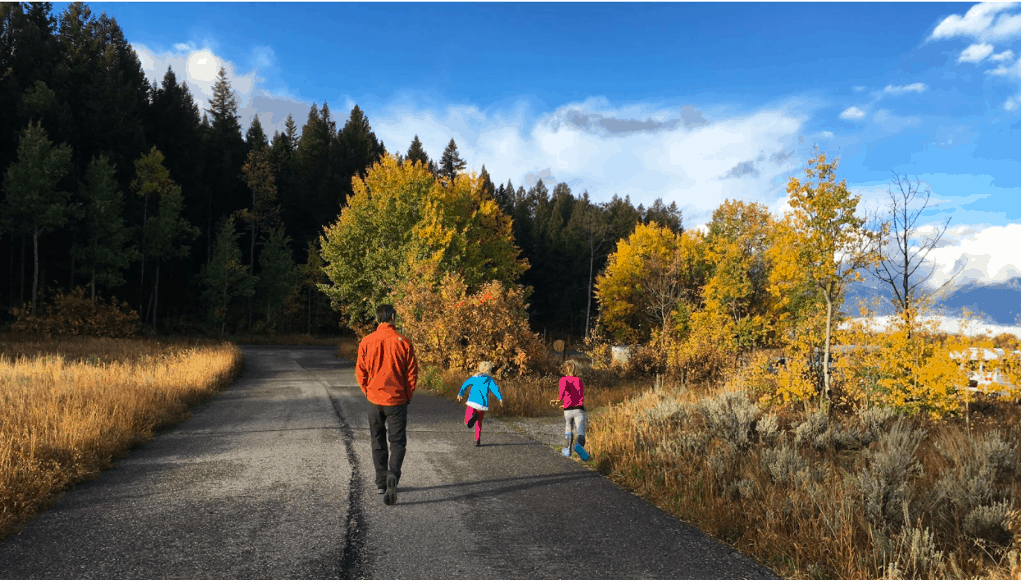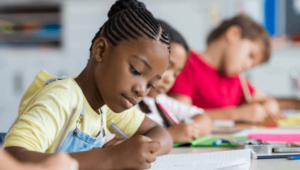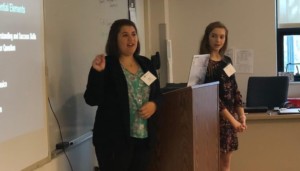Students Share Their Perspectives on Place-Based Learning

By Nate McClennen
Place-based education asks teachers to reconnect learning to local places in order to increase engagement, academic outcomes and impact on community. Student voice is also important in the conversation.
We asked a group of middle school students in Wyoming and Idaho to respond to the prompt, “What are the benefits of place-based education?”
Here is what they said.
“I feel better. I can understand more.”
“It helps me to learn better. When we were in the Gros Ventre [Wilderness], place-based learning helped me because I could see it and being there helped me learn about the place better.”
“I get to work hands-on and instead of just imagining from a photo in a book, I get to go and see the real thing. That’s pretty cool.”
“I think it’s better to learn outside about place because you can interact with what you are learning about. Like when we went to Yellowstone, we did a lot of work outside that helped us really know that place.”
“Place-based learning has made me think outside-the-box and it has encouraged me to pursue things that I like (writing) in ways that connect me to place. I get to make amazing friends who are kind, funny, and happy because we get to learn together.”
“It helps me learn about our surroundings and what it has in it. Like on our Gros Ventre Camping trip we learned about the water to see if it was healthy and then we made predictions about the whole place based on our findings.”
“What I love about place-based learning is that we get to explore new things and learn in a different way that really helps me.”
“Place-based learning helps me get a hands-on feel. It makes it easier to do it rather than imagine it.”
“Place-based learning has changed my attitude towards school and learning.”
“I love place-based learning because we get to go on week-long class trips, on lots of field trips, and we have long recesses so that we can explore our place.”
“I love place-based learning because we get to explore the great outdoors and we get to explore our environment.”
“Place-based learning has helped impact my education by learning about the area that surrounds my home. I have learned about what has happened and even a little bit about what could happen.”
“It has helped me understand in the world in the sense that I know my community. It allows me to wrap my head around it more.”
“It has changed the way I see my community. Because I know more about my local environment, specifically the Teton Fault.”
“Place-based learning helps me to learn about our place and other places. It gets me interested in them. It feels good to collaborate with my other classmates and complete something together like Sage City. I really like that we explore and go on field trips all the time to help us understand our place.”

These brief quotes offer a glimpse into the brains of middle school learners and how they respond to the context of place-based education in the curriculum. As we move into an era of next-generation learning, where relevancy, personalization, and engagement matter, these students feel the difference.
Not only are they engaging in the community, they are imagining what could be in the community – and this is what puts the place-based approach as an integral component to developing well-educated citizens who will contribute to positive change in communities, countries, and the world.
What are your students saying? How do they feel after a day of school? Are they engaged? Have they really learned about how the world works? What will they remember 30 years from today? These measures are the true measures of success in learning.
This blog is part of our “Place-Based Education” blog series. To learn more and contribute a guest post for the series, check out the PBE campaign page. Join in the conversation on social media using #PlaceBasedEd. For more on Place-Based Education, see:
- 5 Levels of Place-Based Learning Implementation
- Teacher Reflection | The Power of Place-Based Professional Learning
- Getting Smart Podcast | Experiencing Place-Based Education at Teton Science Schools
Nate McClennen is the Vice President for Education and Innovation at Teton Science Schools. Follow TSS on Twitter: @tetonscience
Stay in-the-know with all things EdTech and innovations in learning by signing up to receive the weekly Smart Update.




0 Comments
Leave a Comment
Your email address will not be published. All fields are required.